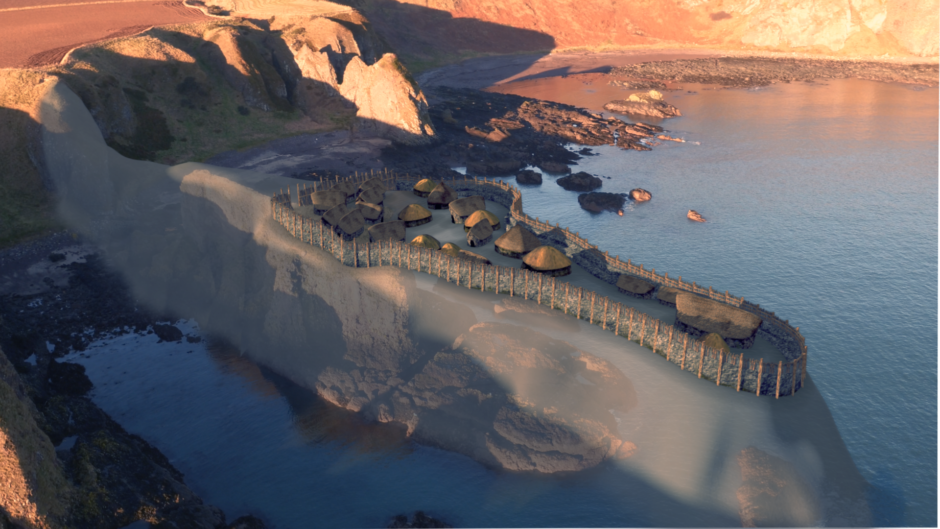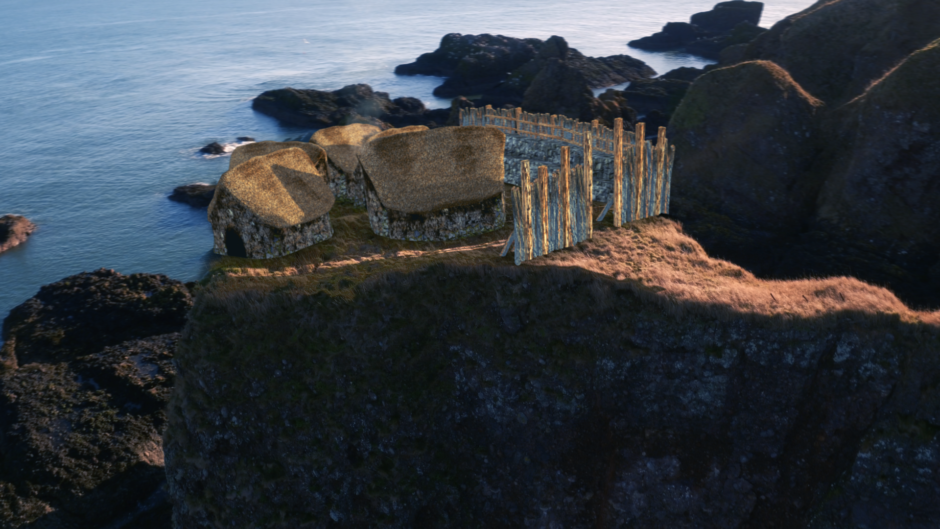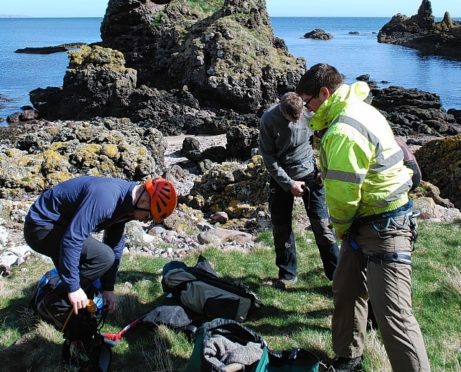A new book has shown how the Picts were once the major power throughout the north of Scotland.
These early Scots were a significant political and cultural force in the first millennium.
But much of their work has vanished or been covered over as centuries have passed, leaving them as often shadowy figures from the realms of ancient history.
Now two Aberdeen University experts, Gordon Noble and Nicholas Evans, have highlighted the influence of the Picts on every aspect of Scottish society through their work ‘The King in the North’.
The book reveals hitherto unknown elite settlements and a major silver hoard and explains the importance of the Pictish symbols found in many places across the north and north-east, from the Rhynie Man to the ‘ghostly’ outlines of a barrow cemetery at Hill of Boyndie.

And one of the authors told the Press and Journal their investigation had yielded a radically-transformed view of the Picts and their contribution to the early medieval world of north-west Europe.
Mr Evans, a research fellow at Aberdeen University, said: “Our perception of Pictish history has changed dramatically in recent years, especially since [British historian and St Andrews University lecturer] Alex Woolf convincingly relocated the dominant kingdom of Fortriu from the south [in Perthshire and the Tay] up to the Moray Firth.
“This, and a lot of ground-breaking textual research, has been incorporated into this book, producing a portrayal of the Picts which will be new to many readers.
“Given this recent progress, The King in the North also highlights that there is more to be discovered about all areas of Pictish life.”
Mr Evans added: “Our author profits from the book will be donated to the Tarbat Discovery Centre at Portmahomack in Easter Ross, a fantastic museum run by a local charity about the history of the peninsula and in particular the sculpture and archaeological remains from the major Pictish monastery discovered there.
“It is a great resource which enables people to encounter and investigate the past.

“We really would like to encourage everyone to visit or support the Tarbat centre and other museums such as the Elpin Museum, Groam House (in Rosemarkie), the Inverness Museum, the Burghead Visitor Centre and the Falconer Museum in Forres.
“They display important collections of archaeological, archival documents and other objects, which are often under threat due to financial constraints, but are well worth visiting and preserving.”
The book is illustrated with a series of stunning images, some from the air, which explain why archaeologists believe this is an exciting time to be working on the history of Pictland or Pictavia.
Mr Evans added: “The King in the North is the result of the work of many archaeologists and historians, and countless members of the public whose interest and support has been crucial in supporting and producing the advances which we explain in this book.
“We hope this publication is an accessible way of sharing these important discoveries, which are transforming our understanding of the Picts in northern Scotland.”
In recent years, archaelogists have unearthed many examples of Pictish settlements across the north of Scotland.
Excavations at Green Castle, Portknockie identified a defended settlement of the Pictish period and the remains of a timber-laced rampart.
At Portmahomack, on the Tarbat Peninsula, digs revealed a Pictish monastery and secular settlement and tracked its demise in the Viking age.
Aberdeen University’s own Northern Picts project, launched in 2012 has resulted in excavations at Rhynie, Burghead and Dunnicaer and helped identify a major portion of a silver hoard at at Gaulcross in Banffshire.
‘The King in the North’: The Pictish Realms of Fortriu and Ce by Gordon Noble and Nicholas Evans is published by Birlinn (£14.99).
